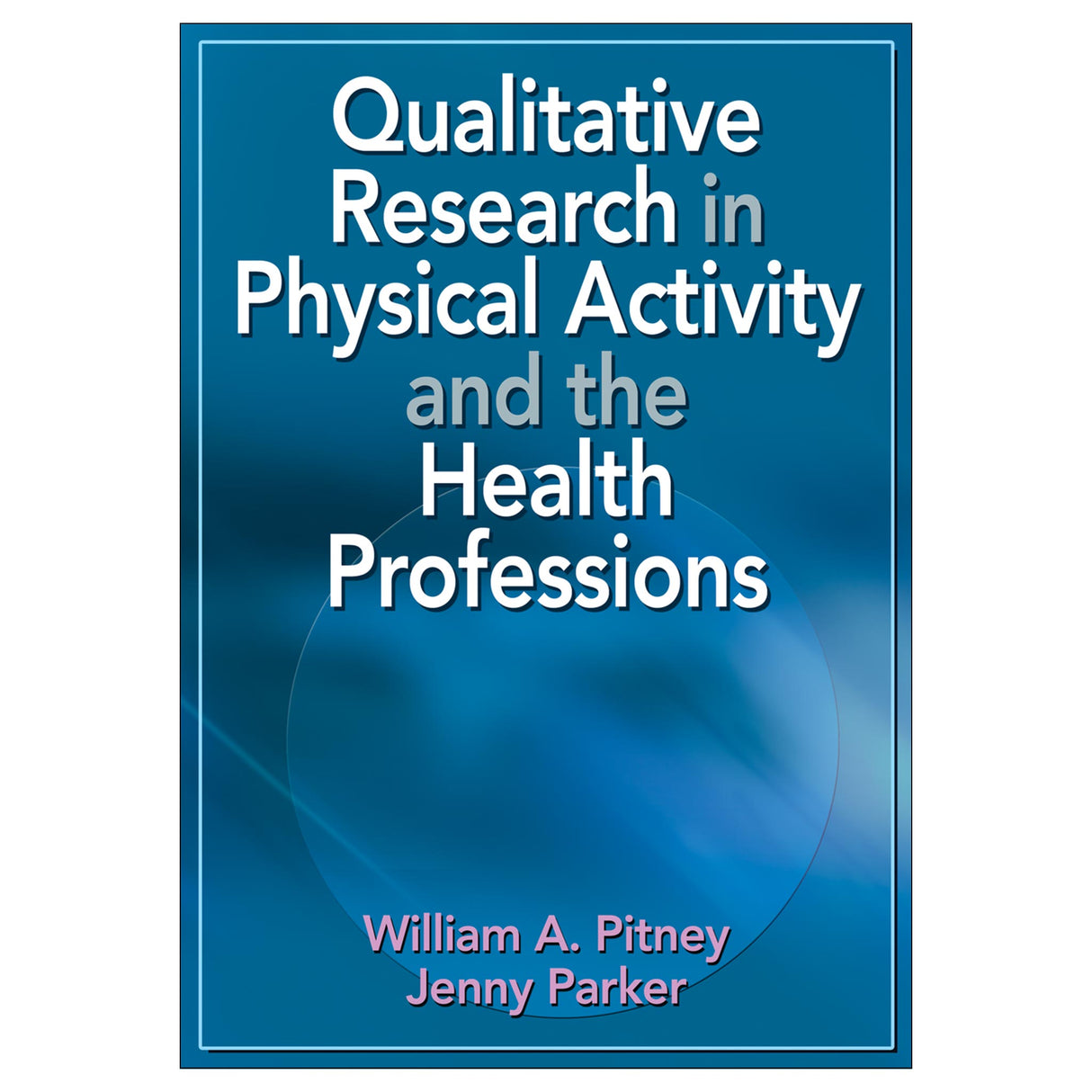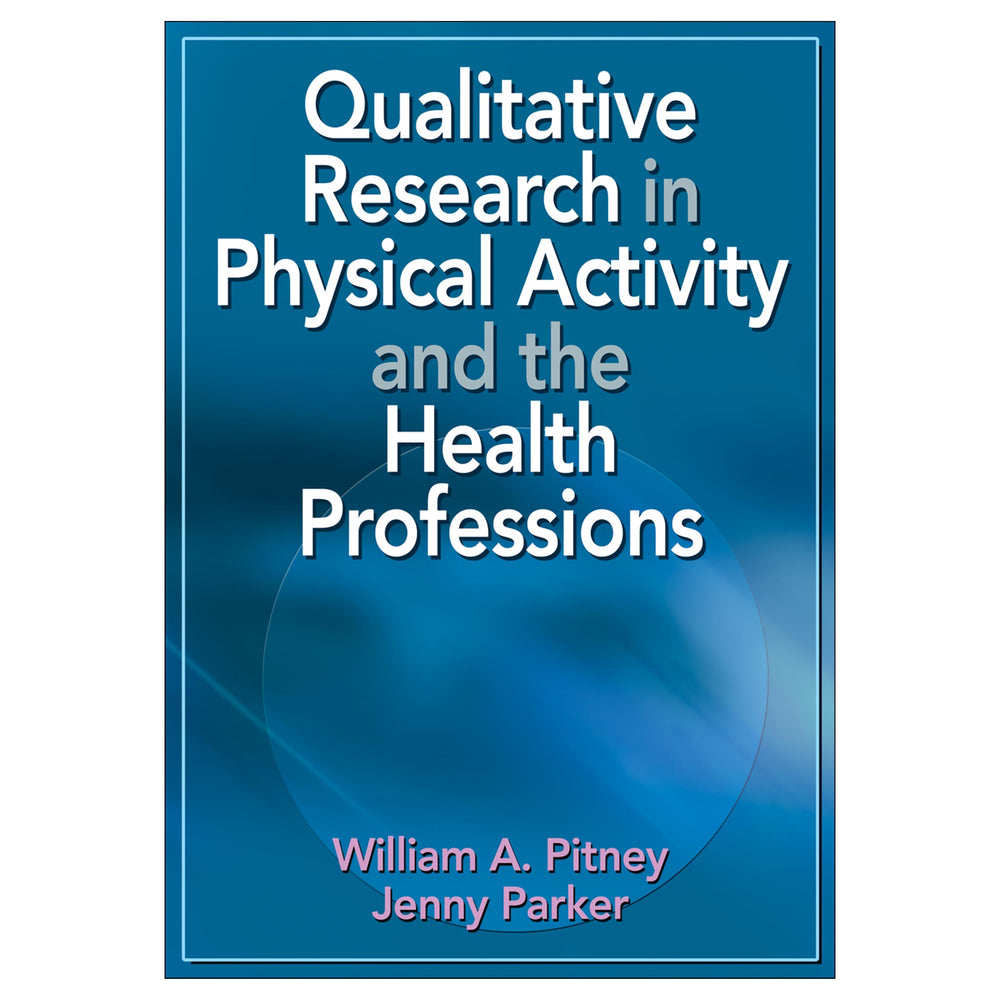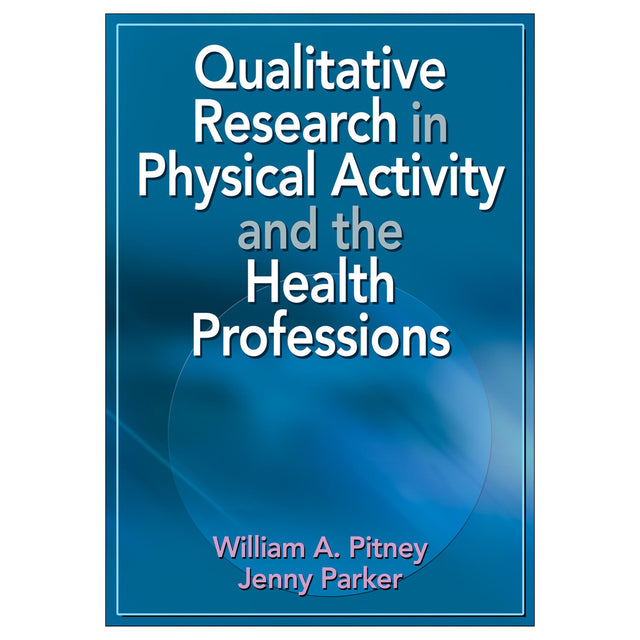Qualitative Research in Physical Activity and the Health Professions PDF
Author: William A. Pitney, Jenny Parker
$58.95 CAD
Access Duration: 10 Years
- Numerous pedagogical aids facilitate the learning process, including Learning Objectives, Dialogue Boxes that feature students’ questions in a Q&A format, Take-Home Messages that summarize each chapter, Learning Activities that students may perform on their own time as an assignment, and Checking Your Knowledge sections that feature multiple-choice questions.
- The more familiar quantitative designs are contrasted with qualitative ones, making it easy for readers to follow the flow of information and make associations about how the two methods complement one another.
- Examples from current literature accentuate the essential components of an authentic qualitative research study, including observations, interviews, open-ended questions, and a format for analyzing data.
- Actual published articles are provided so that students can evaluate qualitative research methods.
Audience
Reference for researchers and practitioners in athletic training, physical activity, physical therapy, and occupational therapy, as well as professionals in the fitness and health fields. Also a text for upper-undergraduate and graduate students who are learning concepts and principles applied to qualitative research.Chapter 1. Introducing Qualitative Inquiry
The General Nature of Research
Quantitative and Qualitative Inquiry
Attributes of Qualitative Research
Considerations, Contemplations, and Consternations
Summary
Chapter 2. Dissecting the Anatomy of a Qualitative Research Study
Recognizing a Qualitative Research Study
Identifying the Components of a Qualitative Research Study
Summary
Part II. Conducting a Qualitative Research Study
Chapter 3. Conceptualizing Your Study
Formulating a Research Plan
Designing an Introduction
Assembling a Literature Review
Summary
Chapter 4. Collecting and Analyzing Qualitative Data
An Overview of the Interpretive Process
Participants and Sampling
Qualitative Data Collection
Qualitative Data Analysis
Summary
Chapter 5. Ensuring Trustworthiness
The Concept of Trustworthiness
Ensuring Trustworthiness
Additional Considerations About Trustworthiness
Summary
Chapter 6. Attending to Ethical Issues
Research Ethics Overview
Regulation of Research
Principles of Research Ethics
Additional Considerations
Institutional Review of Research
Summary
Part III. Writing Qualitative Research
Chapter 7. Learning to Put Your Research Plan Together
Components of a Proposal
Oral Presentation for an Academic Proposal
Summary
Chapter 8. Writing Your Results and Discussing Your Findings
Components of a Research Report
Presenting Your Results
The Discussion
The Final Review of the Entire Study
Summary
Part IV. Continuing Your Qualitative Research Journey
Chapter 9. Understanding Forms of Qualitative Research
Basic Qualitative Research and Beyond
Grounded Theory
Ethnography
Phenomenology
Additional Forms of Qualitative Research
Summary
Chapter 10. Being a Good Consumer of Qualitative Research
Evaluating Research
Begin With the Fab Five
Dig Into a More In-Depth Evaluation With the Top 10
Conduct a Full Review With the Thought-Provoking 33
Recognizing Specific Forms of Qualitative Research
Summary
Chapter 11. Looking Back and Moving Forward
Looking Back
Defending Your Qualitative Research
Combining Methods to Address Research Issues
Using the Practical Toolbox
Summary
“This book is ideal for novice qualitative researchers. Not only does it serve as a great reference tool, it also provides basic valuable information on qualitative research for those who conduct quantitative research.”
Doody’s Book Review





